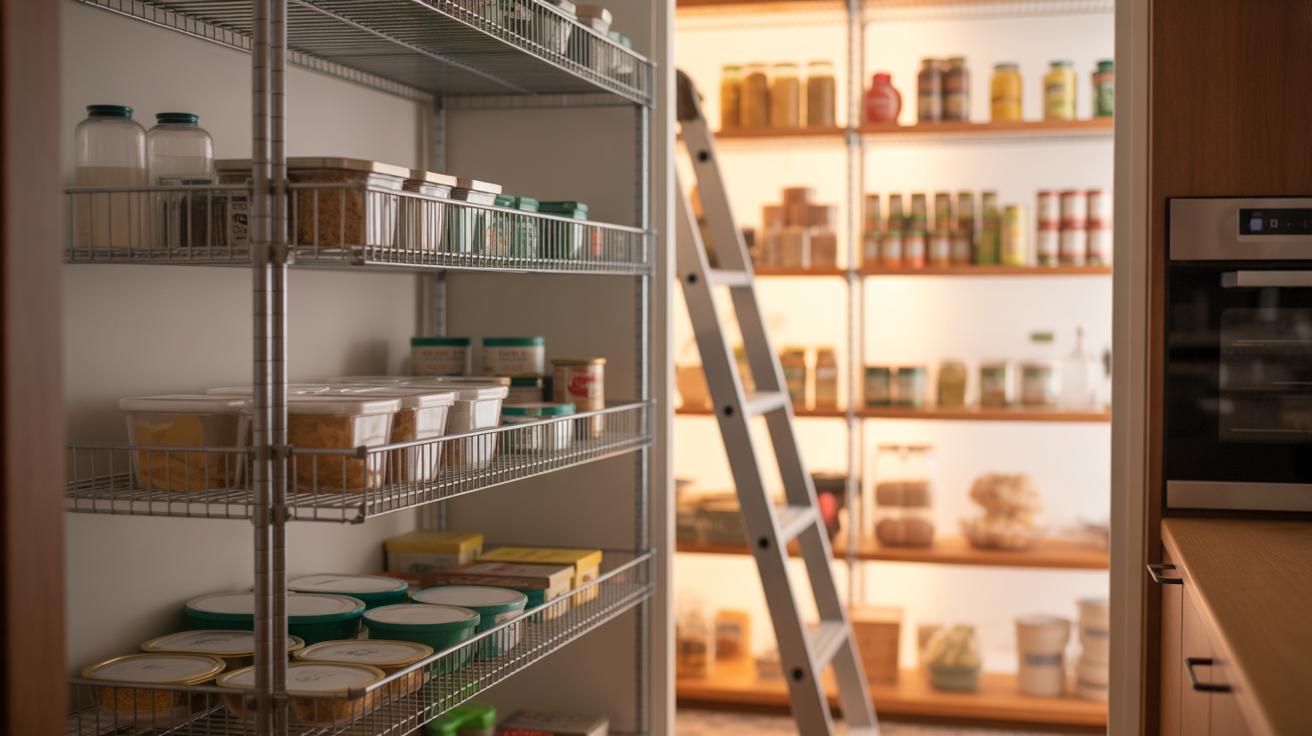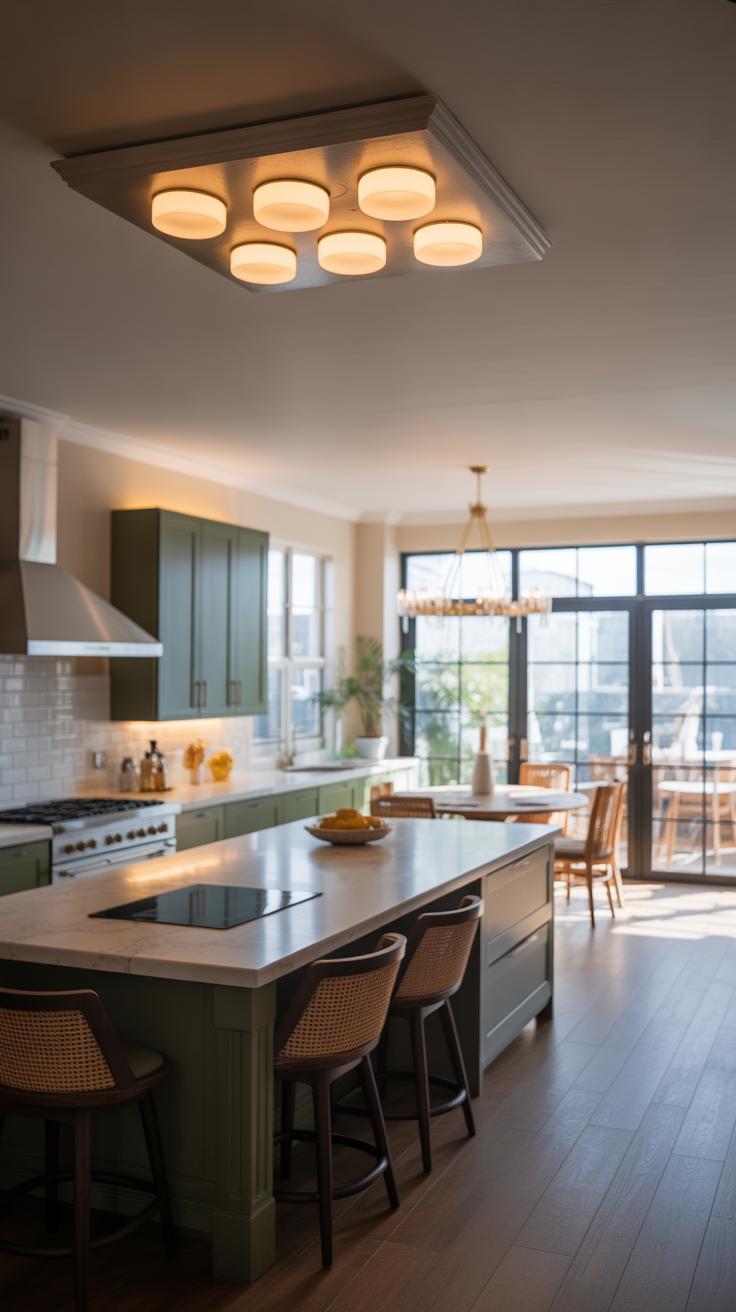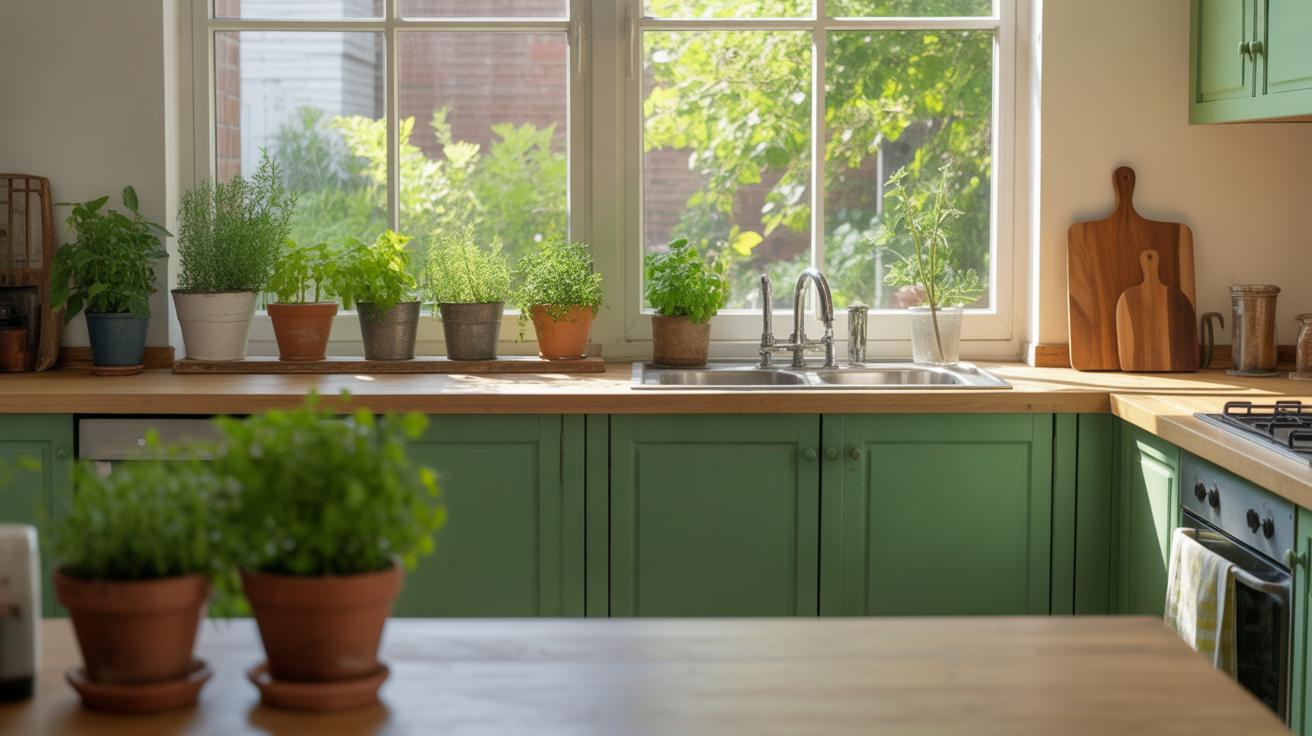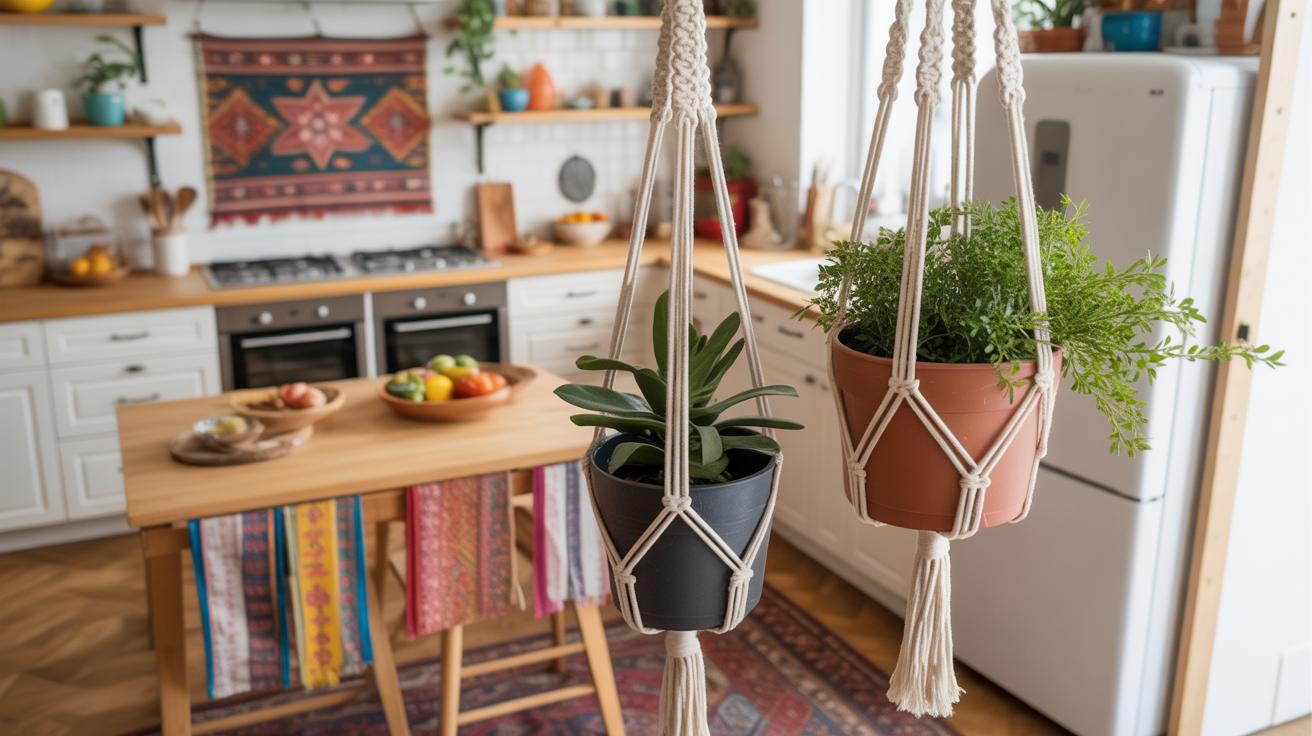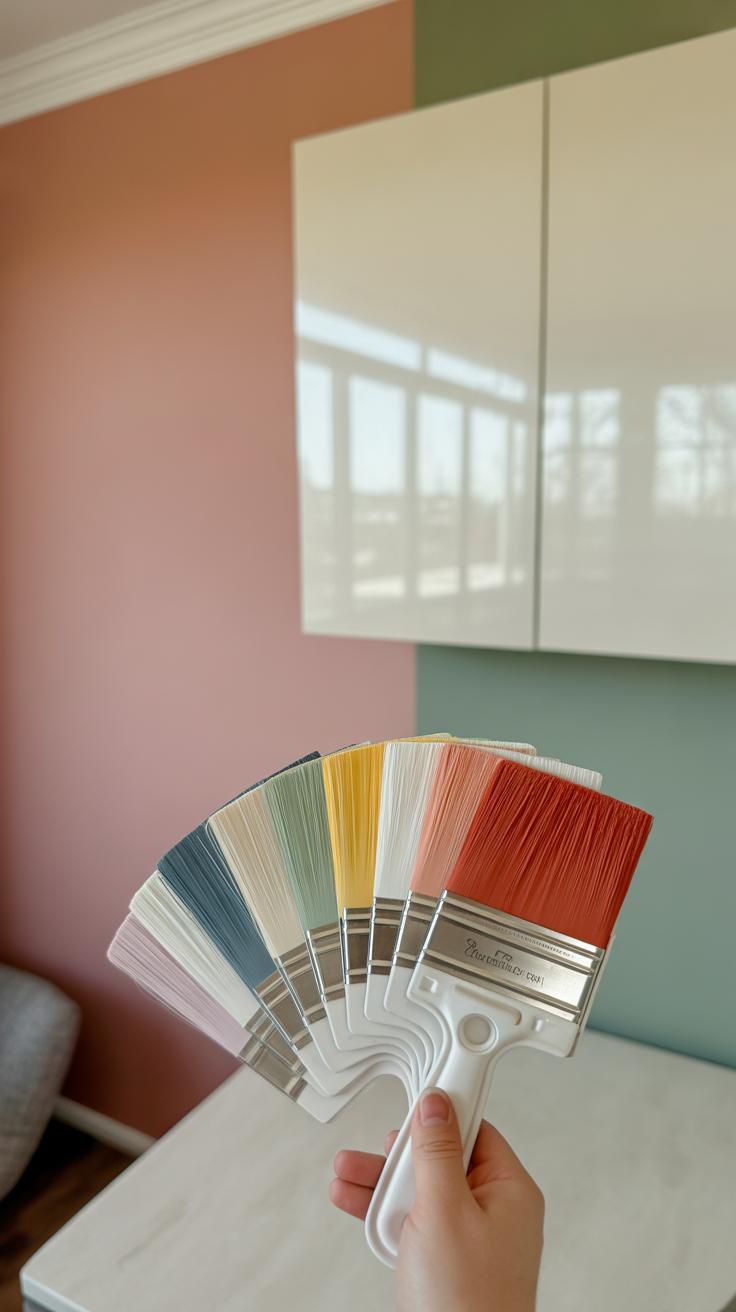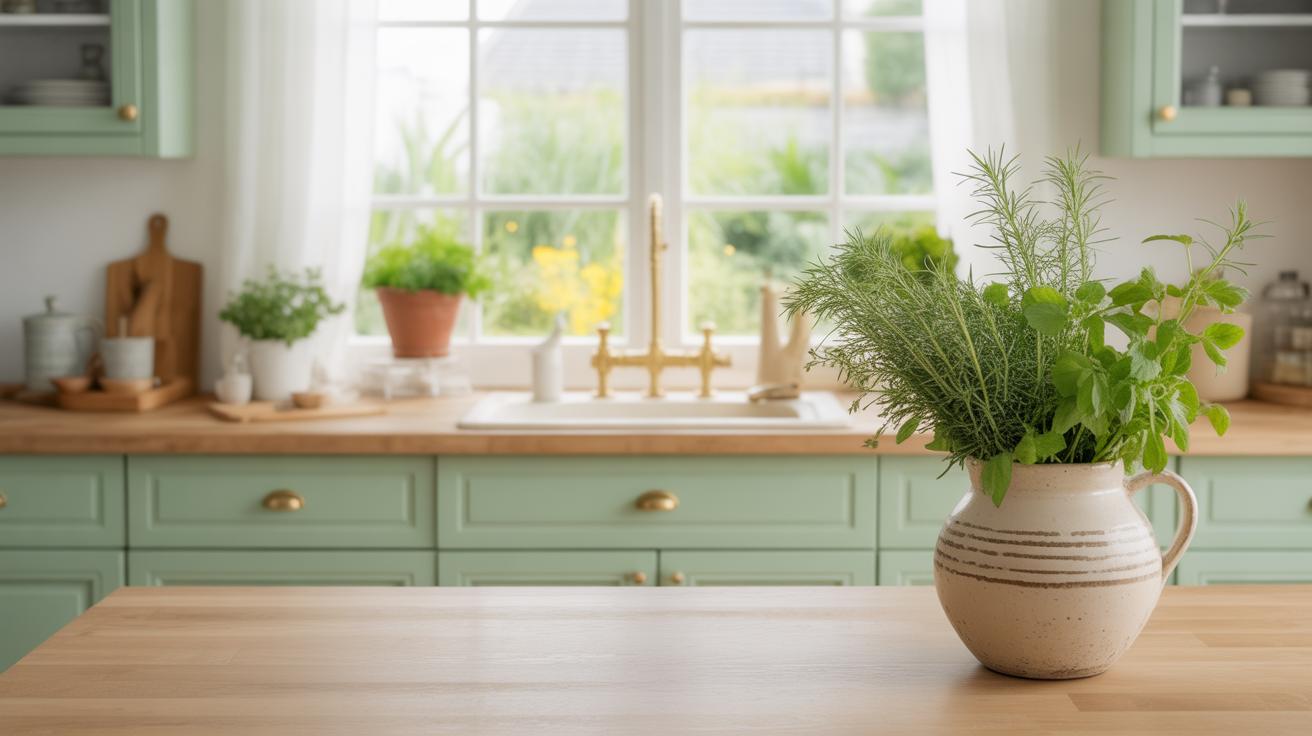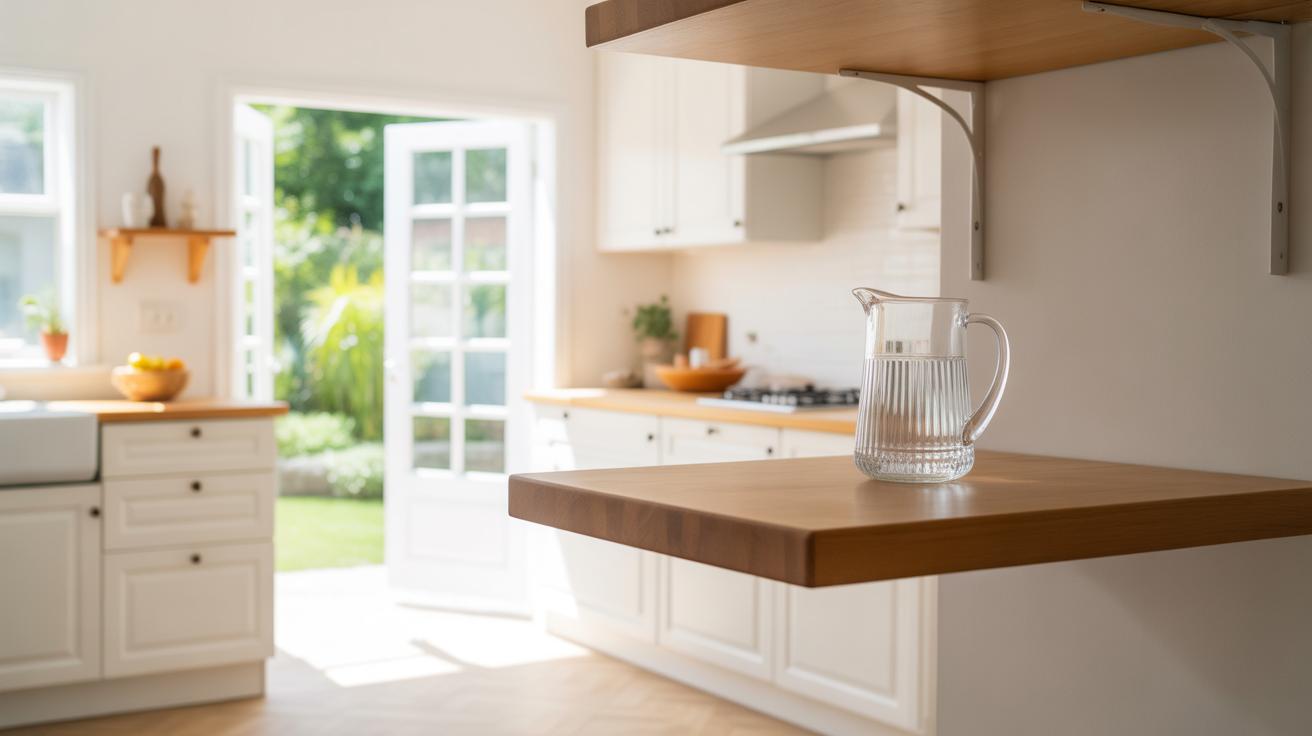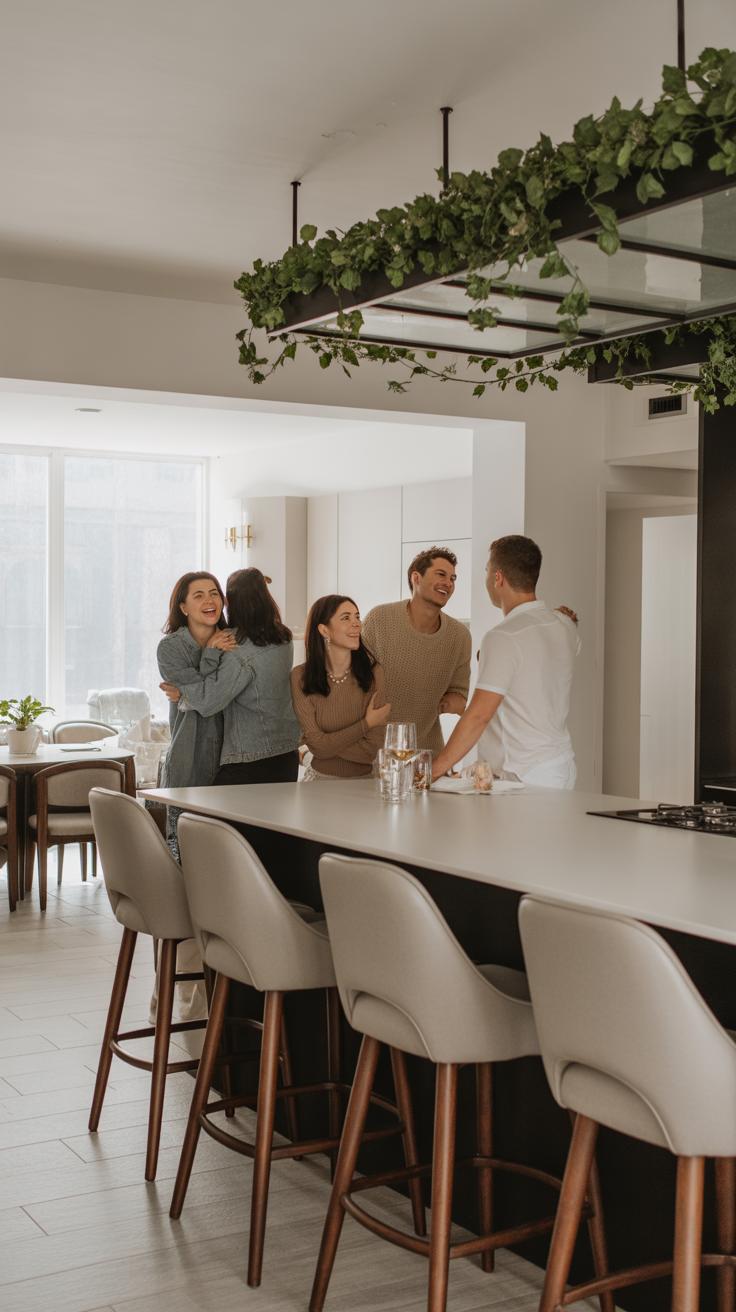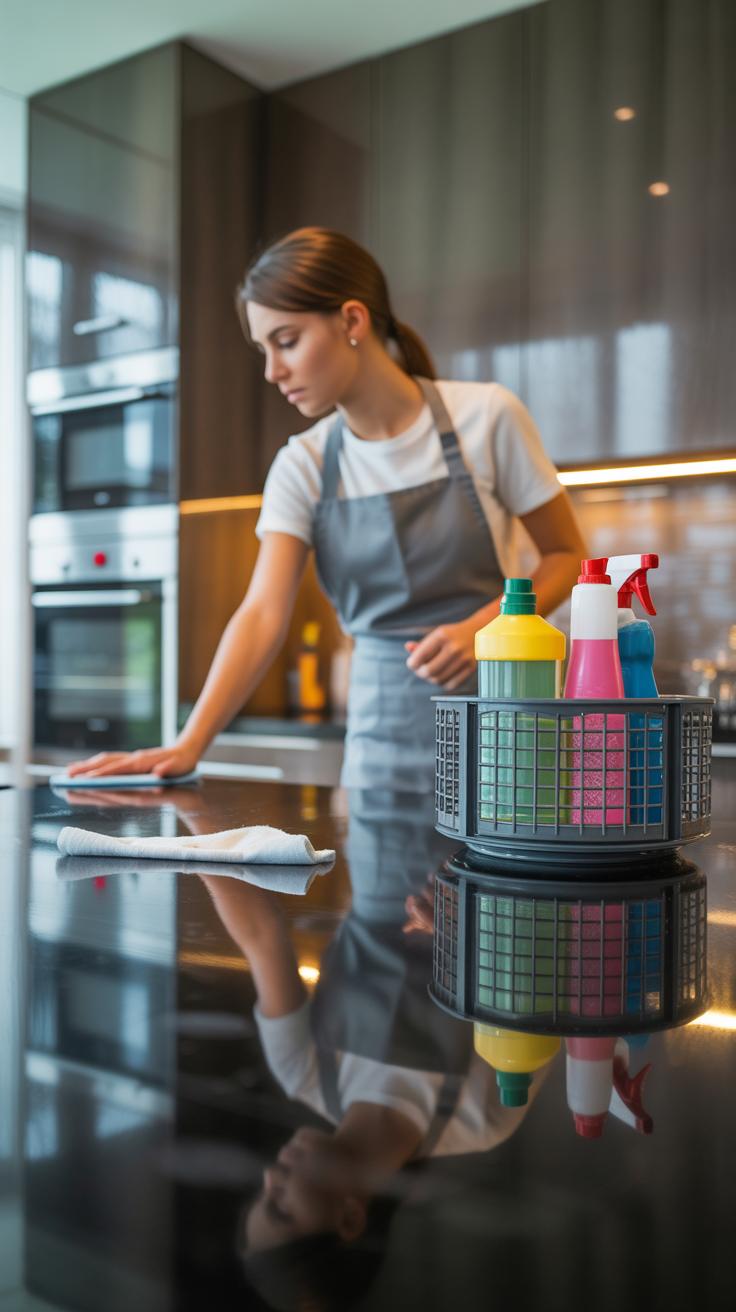Introduction
Modern kitchen interiors focus on creating spaces that are sleek, spacious, and highly functional. They offer a blend of style and practicality, making the kitchen a central part of the home for cooking, dining, and socializing. This article explores inspiration for modern kitchen interiors, highlighting key design elements and practical tips to help you achieve a space that fits your lifestyle and taste.
You will learn about design choices such as layouts, materials, lighting, and storage solutions that make kitchens appear more open and inviting. By understanding these concepts, you can start planning your kitchen transformation with confidence and creativity, ensuring your kitchen is both beautiful and useful.
Understanding Modern Kitchen Layouts
Modern kitchens come in different shapes, each with its own perks and downsides that shape how spacious and functional your kitchen feels. Let’s start with open-plan kitchens. These connect the kitchen with the living or dining areas, creating a wide, uninterrupted space. You get a sense of freedom and easy social flow, which is great if you like to chat or keep an eye on things while cooking. But sometimes, this openness can be a bit much—you don’t have walls to hide kitchen mess or noise, which might bother some.
Then there are L-shaped kitchens. They wrap around two adjoining walls, leaving a roomy corner ideal for placing your appliances or extra storage. It feels quite balanced and allows for a good work triangle, meaning your stove, sink, and fridge are positioned for smooth movement. But the corner can sometimes turn out awkward if you don’t customize the cabinetry carefully, making some space tricky to reach.
U-shaped kitchens almost surround you on three sides, offering ample counter and storage space. This layout supports a very practical cooking zone, and you won’t have to move far between tasks. Yet, in smaller rooms, a U-shape can feel a bit boxed in, shrinking that openness that many modern interiors chase. Plus, if you want multiple people cooking together, it might get crowded fast.
Galley kitchens, on the other hand, are narrow and long, with counters on both sides. They’re fantastic in tight spaces and keep everything within arm’s reach. Still, they can become chokepoints when more than one person is around. The lack of space might limit how many gadgets or appliances you can have comfortably.
Each layout plays with space and flow differently, so thinking about how you use your kitchen daily is key. Do you love to entertain while cooking? Or maybe you prefer a tucked-away spot focused solely on meal prep? The layout you pick will shape your kitchen’s vibe and function more than you might expect.
Choosing Materials for a Modern Look
When picking materials for a modern kitchen, the choices you make will shape not just how the space looks but also how it feels and works daily. Popular options include wood veneers, lacquer, glass, laminate, and stainless steel. Each brings its own character and practical concerns.
Wood veneers and laminate tend to warm up the kitchen, softening what might otherwise feel cold or too clinical. They’re also fairly low-maintenance, which makes them appealing if you want style without too much fuss. I once tried a high-gloss lacquer finish, and while it certainly looks sleek, I found fingerprints quite persistent—something to consider if you mind a bit of upkeep.
Glass panels or cabinet inserts add a reflective quality that can open up the room, making it seem larger and more airy. Stainless steel, often chosen for appliances and sometimes countertops, introduces a shiny, industrial edge. It’s tough to clean, yes, but it does bring a certain coolness that balances warmer textures.
Choosing materials isn’t just about looks; it’s about fitting your lifestyle. Think about how much time you spend cooking, cleaning, or entertaining. Do you want surfaces that invite touch or ones that stay pristine? There’s no perfect answer, but understanding these materials helps you make decisions that match your kitchen’s personality—and your own.
Lighting Solutions for Spacious Kitchens
Lighting shapes how you experience a kitchen more than you might realize. It doesn’t just illuminate; it transforms. In modern kitchens, thoughtful lighting can make a space feel bigger, cleaner, and more inviting. The balance between natural light, task lighting, and accent lighting plays a big role in creating that effect.
Maximizing Natural Light
Placing windows where they catch the most sunlight during the day is surprisingly effective. If your kitchen overlooks a garden or open space, try to avoid heavy curtains or dark frames that block light. Light-colored walls and reflective surfaces further bounce daylight around, lifting shadows. I once experimented with pale gray instead of white—it still brightened the room but added some warmth. So, choosing the right shade matters more than you might think.
Think about skylights or glass doors if you want to up the natural light without changing walls. Letting the outdoors in… well, it just makes everything feel less cramped.
Task and Accent Lighting
Under-cabinet lights are almost a necessity when prepping meals. They shine directly on countertops, cutting down on eye strain and shadows. In one kitchen I saw, LED strips made chopping vegetables easier and even highlighted the granite countertop’s veins—it’s like the lighting did double duty, both useful and decorative.
Pendant lamps above islands or breakfast bars don’t just brighten—they add personality. Pick shapes or colors that contrast with the room’s basics to create small focal points. But be careful: too many pendants can crowd the visual space instead of freeing it up. Sometimes less feels larger.
Have you ever noticed how good lighting makes the entire kitchen more welcoming? It isn’t just about seeing better; it’s about feeling at ease. Trying different light placements might reveal surprising effects on how open your kitchen feels.
Smart Storage for ClutterFree Interiors
Keeping a kitchen neat can feel like a constant challenge. Built-in cabinets offer a way to tame that chaos by organizing everything from pots to pantry staples. When you choose cabinetry that reaches ceiling height, you gain valuable space for items you rarely use but want close at hand. It’s a simple step, but I find it often overlooked. Open shelving between cabinets can also help you keep everyday items within easy reach without cluttering countertops.
Pull-out shelves are another game-changer. Imagine sliding out racks that reveal spices, baking trays, or even recycling bins hidden out of sight. I’ve seen kitchens where these little details make all the difference in staying orderly. They often feel like secret drawers for the kitchen—a nifty way to keep surfaces clear while still having everything close.
Kitchen islands do more than provide extra workspace. When designed with storage underneath, they become hubs for organization. You might find drawers for utensils, shelves for cookbooks, or compartments for larger appliances that would otherwise crowd cabinets. Some islands even hide appliances or serve as a mini-pantry.
There’s also a certain pleasure in hidden compartments—pull-out cutting boards, toe-kick drawers, or concealed trash bins that keep everything tidy without being obvious. You might wonder if all this is too much. But honestly, smart storage makes the kitchen more inviting, less cramped, and easier to keep clean—and that’s worth the effort.
Color Schemes That Enhance Space
Choosing the right colors for your kitchen can really shift how spacious and welcoming it feels. Neutral tones like beige, off-white, and soft pastels tend to reflect natural light better, which can make even a compact kitchen seem more open. I’ve noticed that white walls paired with light wood or subtle gray cabinetry often make rooms breathe easier. It’s almost like the space takes a quiet breath, relaxing instead of feeling cramped.
Monochromatic palettes work surprisingly well too. Sticking to different shades of the same color adds depth without cluttering the visual space. For example, varying tones of light gray or cream can create a smooth look that’s neither too flat nor too busy. Though, sometimes those palettes risk appearing a bit cold or bland if you’re not careful.
Neutral and Light Colors
Colors like beige, white, and gentle pastels have a natural talent for bouncing light around. This makes corners, cabinets, and surfaces seem less like barriers and more like part of the whole room. Some people might say pastels feel too soft, possibly even outdated, but I think they offer just enough life without overpowering the openness you want.
Try pairing these light tones with reflective finishes—glossy tiles or polished countertops—to boost that bright effect. You might even catch yourself spending more time in your kitchen simply because it feels airier, and that can be unexpectedly pleasant.
Adding Contrast Tastefully
Introducing contrast is tricky. It should create interest but never overwhelm, which is easier said than done. A dark backsplash, for instance, can anchor the space visually and break up the light expanses without shrinking the room. I once saw a kitchen with a matte black backsplash paired with crisp white walls and cabinets—it had a surprisingly roomy feel despite the dark patch.
You could also add pops of color through small accents like colorful stools, utensils, or even plants. These touches bring personality and warmth but don’t compete with the openness. Tasteful contrast makes the kitchen inviting, not intimidating. So, think about where your eye naturally lands and use darker or brighter shades there, keeping the rest calm and neutral—at least, that’s what worked for a friend of mine who reworked a tiny kitchen with just those few choices.
Incorporating Technology for Modern Convenience
Smart Appliances
Smart refrigerators are more than just storage units these days. They often include touchscreens that keep track of your groceries, suggest recipes based on what’s inside, and even connect with your phone so you can peek into your fridge while grocery shopping. Some models can remind you when items expire—though, honestly, I sometimes wonder if I’d actually follow those alerts.
Smart ovens take convenience a step further. You can preheat them remotely or monitor cooking progress without standing in the kitchen. Certain models even adjust temperature and cooking time automatically depending on the dish. It saves time and can reduce the chances of burnt dinners, which, let’s face it, we’ve all experienced.
These appliances may feel like luxury, but they can make everyday cooking a bit easier and less stressful, especially if you often juggle meal prep with a busy schedule.
Eco-friendly Kitchen Gadgets
Touchless faucets are a simple upgrade that can make a noticeable difference. You don’t have to fumble with handles when your hands are dirty or full, and they can help reduce water waste by shutting off automatically. That little convenience quickly becomes something you miss in older kitchens.
Energy-efficient devices, like induction cooktops and LED lighting, cut down on electricity use without sacrificing performance. They might seem more expensive at first glance, but they usually pay off over time. Besides, who wants a kitchen that doubles as a utility bill nightmare?
Water-saving dishwashers and low-flow fixtures complement these efforts. Together, they help create a greener kitchen space without demanding big sacrifices from you.
So, what if your kitchen could not only look modern but also support a lifestyle that’s a bit kinder to the environment and a bit easier to manage day-to-day? These technologies push toward that—though, admittedly, it still feels like there’s room for improvement in making them truly seamless and approachable for everyone.
Creating Comfortable and Social Kitchen Spaces
The kitchen isn’t just for cooking anymore. It’s where stories are shared, snacks are stolen, and sometimes, where the best conversations happen. Making these spaces comfortable for gathering means thinking beyond just countertops and appliances. One popular way is adding seating right at the kitchen island. Placing stools around an island invites people to hang out while meals are prepared. It’s a simple setup, yet it encourages interaction—kids can do homework, guests can chat without being in the way, and cooks don’t feel isolated.
Open layouts play a big role too. Taking down walls or designing kitchens that flow directly into dining or living areas creates a connection. You don’t have to shout across rooms or lose touch with others. It’s especially handy when you’re juggling dishes and conversations. Of course, open spaces can sometimes feel noisy or less private, but they really do invite togetherness in a way closed-off kitchens rarely manage.
Multipurpose islands often combine these ideas. Think of an island that serves as a prep station, dining table, and storage unit all at once. They become a natural gathering spot, offering surfaces for food and informal seating for quick chats. It’s a bit like the kitchen’s social hub, blending function with friendliness. Have you noticed how these islands tend to pull people in, even when no one is cooking? That speaks volumes about their role in creating warm, welcoming kitchens.
Maintaining Your Modern Kitchen Interior
Keeping a modern kitchen looking sleek means more than just wiping down counters now and then. You probably notice how quickly surfaces and appliances can lose their shine if not cared for regularly. Small habits make a big difference. For daily upkeep, try wiping spills immediately. It prevents stains and sticky buildup that’s harder to remove later. A quick swipe with a microfiber cloth on your countertops and stovetop each day keeps things spotless without much hassle.
Once a week, spend a little more time. Clean your sink with a gentle, non-abrasive cleaner—this stops grime from settling into scratches. Don’t forget the inside of your microwave and fridge door edges where crumbs often hide. I found that dedicating just 10-15 minutes weekly makes a noticeable difference. Your appliances last longer when kept clean and free of dust and food residues that cause wear over time.
Daily and Weekly Cleaning Tips
Try to:
- Wipe down cabinets and handles to avoid grease buildup.
- Use soft cloths to clean stainless steel appliances to avoid scratches.
- Empty crumbs from toaster trays regularly to prevent fires or smoke.
- Check and replace water filters.*
These little actions? They add up to a kitchen that feels fresh every day and functions well longer.
Long-term Maintenance Advice
Sometimes, it’s hard to spot trouble until it’s too late. I learned this the hard way with a cabinet hinge one year; a small wobble turned into a door that, well, almost fell off. Check hinges, handles, and seals monthly. Tighten screws and lubricate moving parts when needed. Look under sinks for leaks or water damage because moisture quietly ruins cabinets and floors if ignored. Think about your countertops—any chips can worsen but sealants can be reapplied to preserve their look and durability.
Don’t hesitate to fix small cracks or a dripping faucet. These may seem minor, but they can cause bigger headaches if left alone. What areas in your kitchen might need a quick look this week? Sometimes, the messiest spots aren’t obvious at first glance.
Conclusions
Modern kitchen interiors combine simplicity with smart design to create spaces that feel open and organized. Choosing the right layout, materials, and lighting can transform your kitchen into a place where everything has its spot and tasks become easier to complete. You can make even a smaller kitchen feel spacious with smart planning.
Remember, the key is to focus on what you need most from your kitchen. Whether you enjoy cooking, spending time with family, or entertaining guests, a well-designed modern kitchen supports all those activities. Start implementing these ideas today and enjoy a kitchen that truly works for you.



